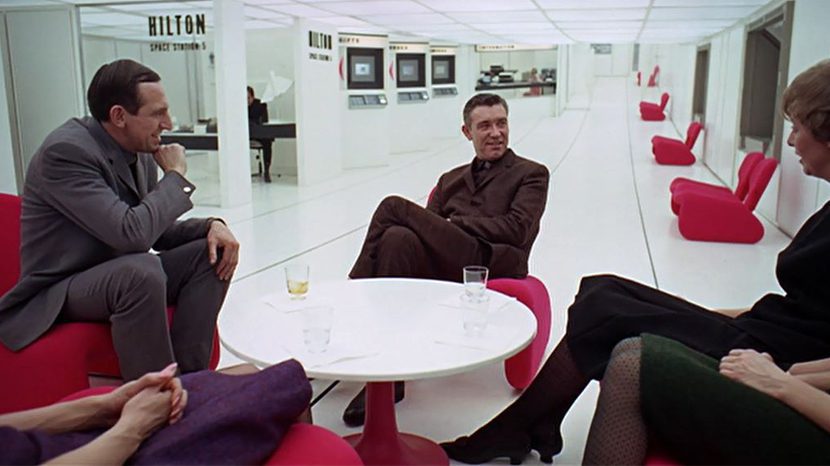Book review: The Architecture of Cinematic Spaces
I was in my early 20s at art college in London when I first saw The Cabinet of Dr. Caligari. The theatrical film sets of Robert Wiene’s 1920 German Expressionist film got right under my skin and never really left me. If I remember correctly, this film worked its way into a college thesis or two and my final design degree show exhibition was influenced by the sloping exaggerated perspective of the film’s captivating mise en scéne. Decades later I would go on to found this very website dedicated to the details of film set design, furniture and decoration. The lasting curiosity in cinematic spaces which Caligari awoke in me is therefore more than evident.
The production design of Caligari is the subject of the first chapter of a book I was excited to receive in the post recently. It transpires that authors Armen Karaoghlanian and Mehruss Jon Ahi equally enjoy being immersed in cinematic worlds: This filmmaker/writer and architectural designer/graphic artist are the duo behind the online journal Interiors and have recently published The Architecture of Cinematic Spaces – a dedication to their obsession with the spaces that movie characters occupy.
This book is a graphic exploration of architectural spaces in cinema and combines critical essays with original architectural floor plan drawings. “We created Interiors during our last year of college in 2011″ Ahi explained to me. “Armen was at USC School of Cinematic Arts (Los Angeles, California) and I was attending Woodbury University School of Architecture (San Diego, California). At first, we used our respective majors to create short essays analysing a different film every month with an essay and floor plan diagram. Our intention was to explore the concept of cinematic space and investigate some of our favourite films”.


Their book investigates scenes from some of my own favourite film spaces including the “extra dimensional hotel” room in Stanley Kubrick’s 2001: A Space Odyssey (1968), the Falconer house in Tom Ford’s A Single Man (2009), the apartment in Jacques Tati’s Playtime (1967) and the high rise Twombly apartment in Spike Jonze’s Her (2013).


Other film sets investigated include the Shaw and Morgan penthouse apartment in Hitchcock’s Rope (1948), the Javal apartment in Jean-Luc Godard’s Le Mepris (1963), the McCallister mansion in Chris Columbus’ Home Alone (1990), the brownstone Altman residence in David Fincher’s Panic Room (2002) and the bank in Kogonada’s Columbus (2017).


The monochrome book features big, bold typography throughout and presents analysis of ten films organised chronologically by release date. As well as the captivating graphic floorplans of key scenes, each film is accompanied by an evocative graphic icon.
The only thing missing (presumably due to copyright issues) are film stills of the rooms in discussion, but we suggest you keep this book within reaching distance of the sofa and use it as a reference when watching any one of these ‘must see’ films.
“Our hope is that this book will change the way you view cinematic space” co-author Ahi told me, but I am afraid to say he’s preaching to the converted here at Film and Furniture!

The Architecture of Cinematic Space by Interiors is published by Intellect Books and is available to buy here.

















 Facebook
Facebook Twitter
Twitter Instagram
Instagram Pinterest
Pinterest RSS
RSS